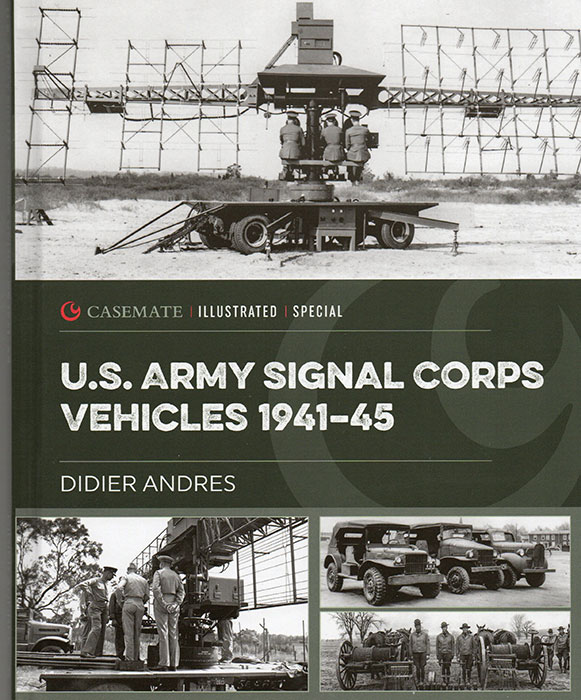|
|
|
|
Casemate Illustrated Special: U.S Army Signal Corps Vehicles 1941-1945
Reviewed by Cookie Sewell
Summary
Title: |
Casemate Publishers Casemate Illustrated Special: U.S Army Signal Corps Vehicles 1941-1945 by Didier Andres |
ISBN: |
978-1-63624-064-0 |
Media and Contents: |
160 pp with illustrations and tables |
Price: |
USD$40.00 |
Review Type: |
First Read |
Advantages: |
Nice, new history of the communications and radar vehicles used by the US Army in WWII; profusely illustrated and with a number of useful tables. |
Disadvantages: |
No TO&E to put the vehicles into perspective by user and echelon; little coverage of signal intelligence vehicles used in WWII, no index makes referencing items difficult |
Recommendation: |
Highly Recommeded to all WWII American military fans and radio buffs. |
FirstRead
A new vendor, For the Historian, showed up at AMPS 2023 with a line of books which were new to me. Casemate Publishers appears to use a number of authors and has this series of books, most of which are from French authors and originally published by Sophie Histoire et Collections in France.
This nice little book covers the history and development of US mobile communications systems other than vehicle-to-vehicle and tactical radio sets. It includes mobile radar sets, long range communications sets, field telephone centers, homing pigeon vehicles, and field wire equipment.
When trucks are used the specific model of the base chassis is given as well as its Signal Corps “K” designator as well as a breakout of all of the K systems used. Postwar this was dropped and the vehicles went under the standard Army-Navy designator system (AN/XXX-x) which remains in use today.
This history includes the prewar series of vehicles and radio sets as well as their wartime developments. At the end and late in the war they show the first of the removable and flexible shelters which were the progenitors of the S-144, S-250 and S-280 shelters which I was familiar with during my career with the tactical US Army. It also covers some of the generator sets used during WWII, both on trailer mounts and in truck mountings as well.
One thing sadly missing is an index to quickly find systems, radio sets or even vehicles such as the standard GMC CCKW-353 2 ½ ton truck mounted systems. This would have helped the book out a lot in regard to its usefulness as a reference work.
Overall, if you ever wondered how the US Army linked all of its headquarters together, did long range aerial radar surveillance, or just want a different type of vehicle to build on a 1 ½ or 2 ½ ton model truck kit, this is an excellent reference. One of the entrants at AMPS 2023 also used it to scratchbuild a model of a field pigeon coop trailer!
They are also available from For the Historian, 42 York Street, Gettysburg, PA 17325 (FortheHistorian.com)

